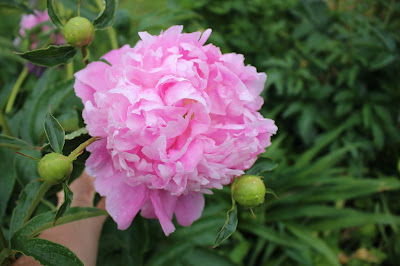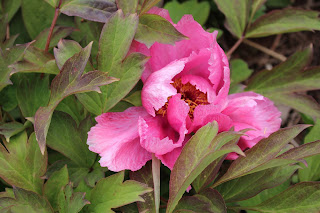When I came back in, I heard some loud rustling and squeaking. Struggling to get out a window it didn't understand was this lovely bird.
I couldn't figure out how to get the bird out of the garage. I thought about throwing a blanket over it, but I didn't like the looks of its claws and beak. When my husband Wayne came home, he came up with the obvious: just open the big front garage door. He went around to the outside of the window, gave a little tap on the glass, and the bird finally got the idea. It swooped out the door and into the blue sky. What a treat to see this magnificant bird up close, and I'm so glad all ended happily.
The visitor was a ruffed grouse. I have never seen one before. Here are some facts about ruffed grouse from http://www.ruffedgrousesociety.org/grouse-facts
- adults are about 40 cm long and weigh 500 g
- less than half make it to one year, and their lifespan is 2-3 years
- live primarily on the ground, but are strong short-distance fliers
- eat the buds and leaves of poplars, birch, and alders
- live in areas recently clear-cut. Old growth forests do not provide food
- foxes, coyotes, hawks and owl eat them
- males are territorial and make a drumming sound to attract a mate
- males do not help raise chicks


















































